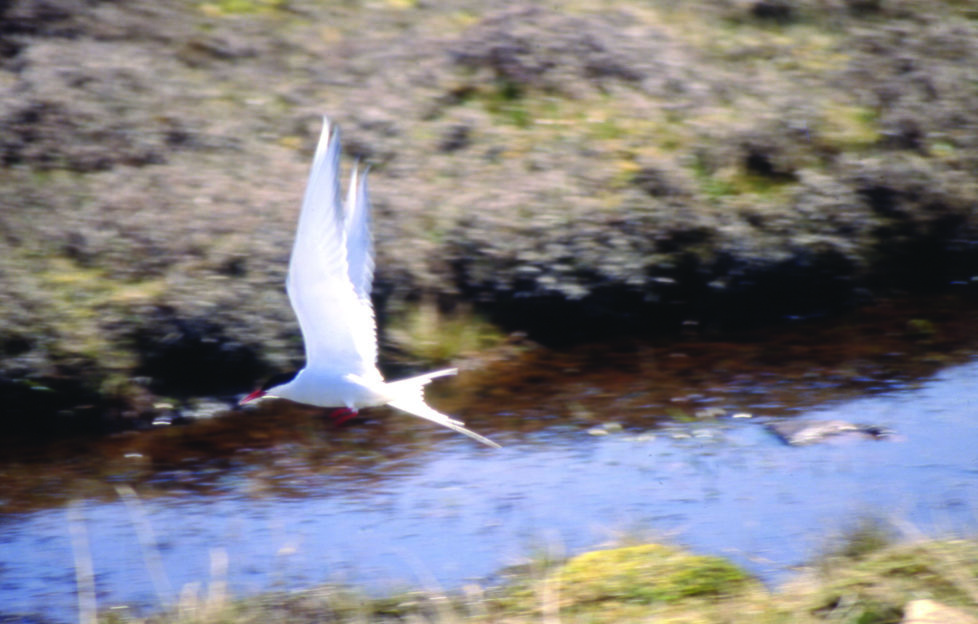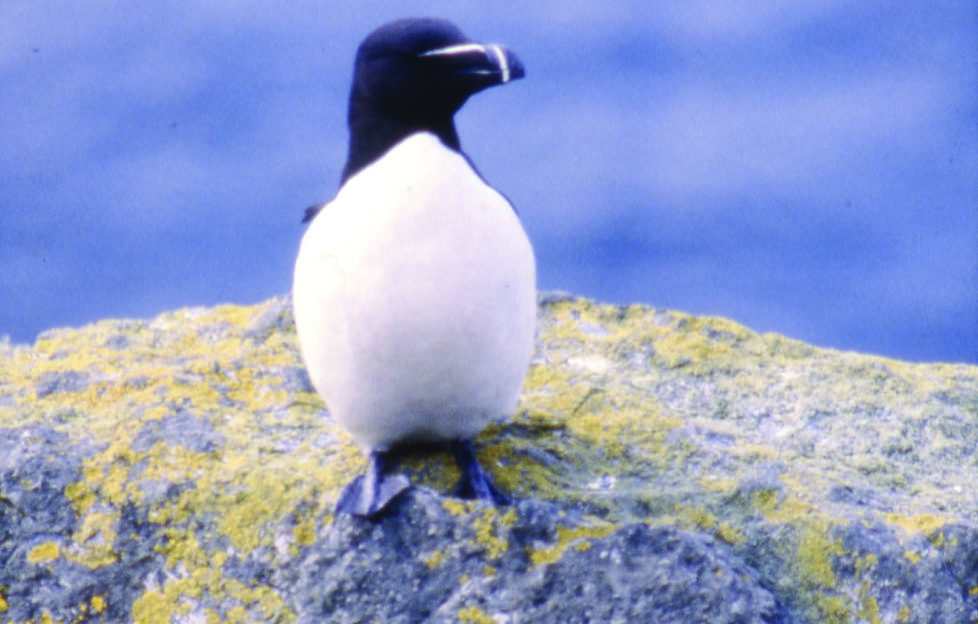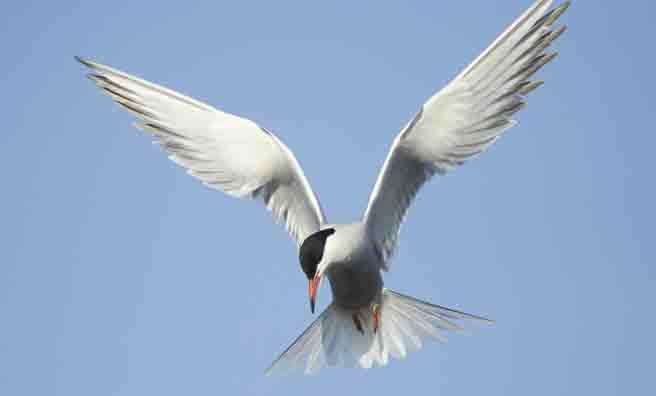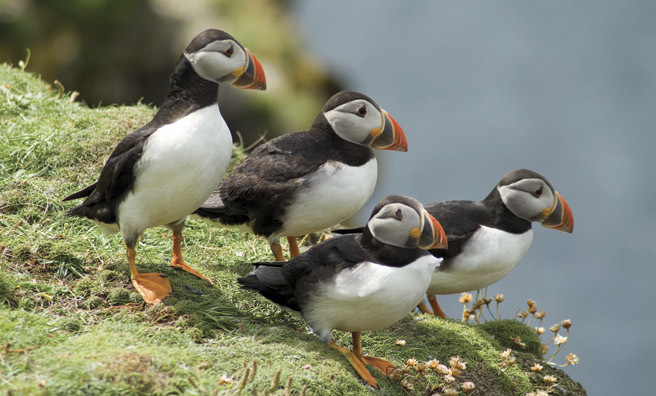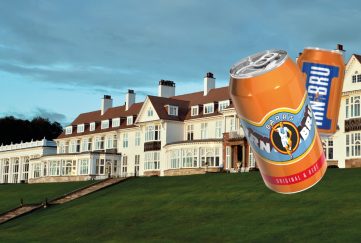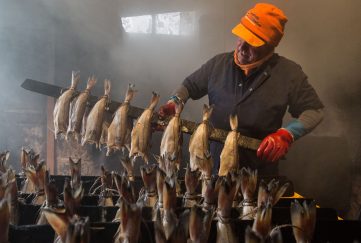Seabird Symphony
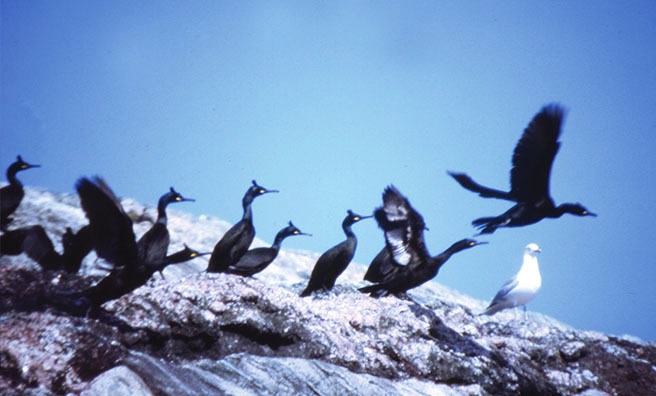
The sounds of Shetland’s seabirds were music to the ears of Jim Crumley
NATURE in a place like Shetland is symphonic. Or it’s jazz with a particularly Ellingtonian twist.
Nature as composer works with grand gestures here, with winds and waves that have had thousands of miles of rehearsal before they barge into this auditorium of a hundred or so fractured islands and start strutting their stuff.
Hordes of birds are already limbering up by the time they get there – percussive puffins, bonxies and shags, mellifluous contralto eiders, massed choirs of gannets that defy musical classification, the liquid gold of a solitary golden plover, heart-strings-tugging divers, curlews that drift in and out of the territory of oboes and clarinets and ragbag scherzos conjured from thin air by thousands of freewheeling waders.
And whenever all these fall quiet in rare – so rare – moments of warm, flat calm, the crooning of a seal rises in lazy thermals from shoreline rocks, the eeriest, weirdest, most seductive cadenza that ever lured smitten mortals to the eternal doom of a twilight life beneath the waves.
And then there are the jazz birds, like the kittiwakes, and if you don’t hear a Cootie Williams trumpet in that endless re-working of echoing triplets, then you either haven’t listened to enough kittiwakes – or enough Cootie Williams.
Many a composer has reached for the sounds of storm and sea
None of this is a new idea, of course, and it was all turning the heads of the human natives for thousands of years before the species invented symphonies or jazz. But many a composer has reached for the sounds of storm and sea, bird and beast, and layered them into themes and variations. And Shetland, of all landscapes, is a reverberating sound-stage.
Twenty-one years ago now, I sat among rocks high on the headland of Eshaness out along the north shore of St Magnus Bay. I was in pursuit of the raw material for a book that would be called Shetland – Land of the Ocean, a collaboration with photographer Colin Baxter.
It was the first of many visits that would take me from Fair Isle to Foula and from Sumburgh Head to Muckle Flugga. At its height, the project utterly subdued my characteristic restlessness for two whole undisturbed weeks on Yell, where eiders and otters visited me every day and I succumbed to a kind of enchantment.
My perch that first day on the dark cliffs of Eshaness was as high and airily precarious as I could stomach, the better to feel my way into the coexistence of the headland’s four constituent elements – ocean and wind and the architecture these have wrought out of ancient rock, and a day-long procession of gannets questing northwards up the ocean’s rim.
The gannets passed at eye level, sometimes almost within touching distance. My hunkered-down shape in grey-green waterproofs was just one more rock among endless rocks. They passed in twos and threes, in sixes and sevens, in dozens and scores, while long and undulating low-level skeins made parallel journeys far out on the open sea.
Those near and far journeyers revealed two very different flight techniques. The far-out birds flew just above the waves with shallow beats of long, slim wings and short gliding respites, which as any albatross will tell you, is the most efficient way to cross oceans.
The touching-distance birds glided amid the unseen switchbacks of the thermals, wings only working in small gestures to stop the hammer-blow gusts from dashing them against the cliffs…until, that is, they ran out of cliffs, at which point they drifted down to thewavetops to join the others.
Either way, it was a stylish procession between nesting colonies and deep-sea feeding grounds, a journey that can travel hundreds of miles and last for days.
Gannets are snow-bright and slim, yellow-helmeted, pencil-winged, and armed with an ominous lance. Elegance is undermined only by ice-blue, stage prop-ish glass eyes and too much eye shadow.
The young birds wear rags, as if tramps had gate-crashed a mannequin parade. The third-year pilgrimage in particular has achieved such a bizarre weave of the old, the transitional and the new that the effect is of a fashion experiment gone disastrously wrong.
Still, they fly serenely enough and they will grow out of it.
I wrote in that old Shetland book that watching the gannets that day for hour after hour was “…like having a favourite passage from a favourite symphony played over and over again, and with every new playing a little more understanding, a little more appreciation of its beauty unfolds…”
“It was a cross between Dickens’ Mr Pickwick and a squashed penguin…”
Other fliers make their own accommodation with the elements. Shags and kittiwakes are particularly accomplished, and although they are markedly different stylists they do share one characteristic – the stormier the sea, the deeper its bass growl, the whiter and bigger the breaking waves, the more they seem to relish being out there.
From my perch in the rocks I watched a shag home in on the cliff. It flew through the troughs between waves, and in the palest of sunlight glowed a spectacular glossy dark green. To reach its nest, it had to run the gauntlet of the gannets’ freeway.
First, and from about 100 yards out, it pulled up into a climb as steep as a cliff-face, until it was above the streaming gannets. Then it circled twice, celebrated the manoeuvre with a complete circuit of the bay then vanished into a black niche in the cliff-face. The kittiwakes, hurtling above the breaking waves and beneath the gannets, or clamped to the black rock’s copious nesting ledges, acclaimed the performance with a long and exuberant crescendo.
There was a sudden soft splutter of wings beside me. A rock smothered in yellow lichen was showing off a creature that hadn’t been there the last time I looked. It was a cross between Dickens’ Mr Pickwick and a squashed penguin, about 15 inches tall, and wearing an air of comprehensive bafflement.
I had never met a razorbill head-on before and about six feet away. I regret now that as a nature writer who takes his work very seriously, I laughed out loud! I didn’t see it come because I was looking at the shag and the kittiwakes, and I didn’t see it go because I was laughing too hard.
Yell is the “largo isle” of Shetland
YELL is the Shetland isle I revisit most eagerly. Between visits, it is the Shetland I dream about. Amid the bedlam of so many of the seabird coasts, the mightily scored cellos and timpani depths and the legato woodwinds of the seals and the wave-top and bird-voiced flourishes of massed violins, Yell was – is – the largo of the Shetland I know.
It sits in the middle, the still centre of the archipelago. Everywhere you look there is the perpetual dance of all the other islands and their intervening Sounds, the restless play of sea and sky, light and shadow. But I first met Yell on a day of warm May winds, drove up from the ferry (the only car) and turned north on a single-track road. After a mile I met a traffic hazard that remains unique in more than 40 years of driving Scotland’s roads.
It was an Arctic tern, it was in the middle of the road and it was sunbathing.
Yell’s roads are not busy and it felt disinclined to move, even when I stopped the car and got out, took its picture, and asked, very politely, if I might pass. It was several minutes later before it abruptly took off and flew straight past me. I watched it follow the road for another 50 yards, then it landed again and settled in the sun. I decided I liked this place.
I had some writing to do and nowhere to stay. I knocked at a door where there were residential caravans in a field. They were full, but I was offered a very small caravan at the foot of the croft and about 20 yards above the high tide. I looked at its view from the table where I would write, nodded, and moved in.
An edgy avant-garde to the symphony!
For two weeks I watched the evening otters and eiders. The sound of eiders lulled me to sleep and woke me in the early morning. And to keep me on my toes there were bonxies and arctic skuas, an edgy avant-garde embellishment to the symphony, wonderfully muscly fliers full of evil intent which they dispense with terrible beauty. You know you are alive when you walk a moorland mile through bonxie country.
Then you suddenly step beyond the unseen boundary of their notion of territory and drop down to a glittering peaty lochan where the voice of redthroated divers curls in spine-shivering oboe notes and at the same moment the rest of the entire Shetland symphony is silent and you lose your heart to the
I have always been drawn to cold, wet, northern places, the Shetlands of this world, for the light, the wildlife, the landscape, the wildness that comes at you in waves, for all nature in symphonic mood.
- A common tern diving for fish (Pic: Alamy)
- A puffin colony on a grassy clifftop


